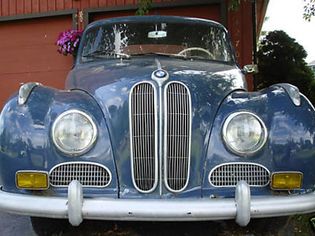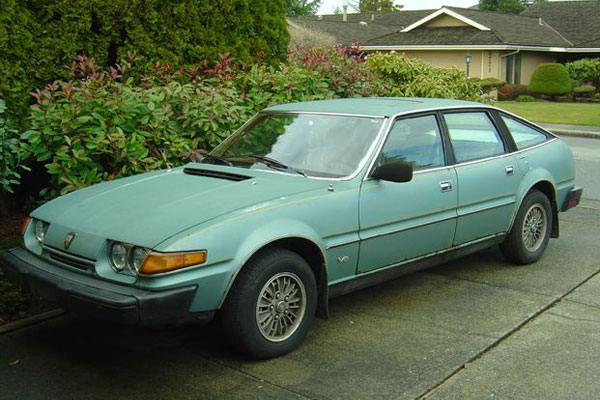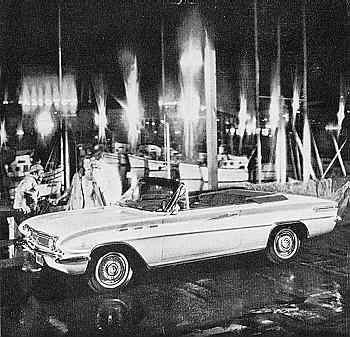Leyland P76 Owners 2006 |
Tech info |
Power without Weight
From South Australian National Mag 1990's
- Ask the average car freak what he knows about the P-76 engine.
- He'll probably assure you that it started life as a Buick and then was sold to Rover before being enlarged for the P76.
- All is true.
- But the real story is much more interesting than that.
To discover this beautiful power unit's real origins we have to a long way further back.


In the begining
- To when BMW brought out a light alloy V8 to power their "Baroque Angel" luxury sedan of the day.
- Look at that BMW engine and it's all there.
- The light alloy block and heads, the five bearing crank the pushrod overhead valves a capacity of 2.58 litres.
- Initial was about 95bhp and up rated 100bhp (Remember they only had about 70 octane fuel in those days).
- This was followed over the next few years with a 3168cc version giving 120bhp and then in 1958 was given twin down-draft Zenith carbies, a hotter cam and returned these favours with 150bhp.
- As much as Chevy were getting out of 4.7 litres!
- In this form it was installed in one of the most beautiful cars of all time, Albrecht Goertz's gorgeous 507 coupe intended as a direct competitors for the Mercedes Benz 300SL.
- Alas, BMW was in deep financial and managerial trouble at the time and these cars never sold in anything like the quantities planned.
- The last V8 was built in 1959 and, as far as anyone knew at the time, that was that.

Detroit
- Meanwhile across the ditch, Detroit was trying to reverse its belief in "bigger is better" and develop "compact Cars" to combat the rise of the imports.
- They floundered about aimlessly for some year but one result of this was that the BMW engine disappeared into GM for study.
- Nobody has ever admitted the link officially.
- But couple of years later, when Buick, Olds and Pontiac bought out there, first compacts, lo and behold, there was the alloy V8!
- It was modified for big volume production and enlarged 3.6 litres, but still essentially the BMW design of yore.
- This way very out of character for GM who were iron engine people.
- It had the effect of sending a shock waves through the US iron and steel industry who saw the nightmare prospect of millions of engines being cast in Aluminium instead of Iron.
- They did not take it lying down.
- They developed light weight casting techniques for which we can be eternally grateful and the end result was a range of V8 engines which were cheaper and as light as the alloy V8s.
- Cost accountants loved them.
- The alloy V8 was once again put out to pasture.

Back across the Atlantic
- We now head back across the Atlantic to where Rover was looking for a more muscular power unit for its sophisticated, but underpowered 2000 model.
- A straight six would not fit.
- They were exploring the possibility of a 5 cylinder (long before Audi), when the idea of that V8 alloy engine the Yanks didn't seem to want anymore came up.
- One thing led to another, a deal was donee and once again the engine returned to Europe.
- Rover did a complete re-engineering job on the unit which became the 3.5 litre -motor so well known' today.
- Initially it had twin SU carburettors which were later replaced by fuel injection.
- Sadly the Rover suffered badly with the introduction Australia's ADR-27A emission laws and was strangled to a mere shadow of its former self.
- Comparison with the European version shows a power loss of some 30-40 horsepower.
- The Rover 3500, once a really quick car, became a power steered, air-conditioned, automatic slug.
- So did the Range Rover.
- It is on lately that the introduction of fuel injection and modern engine management has restored some of the former glory to the Range Rover.
- It was too late for the 3500 Rover, which has been replaced by a Honda V6.

P76
- In the meantime the alloy V8 had earlier made yet another overseas journey - this time to Australia to power our local answer to the Edsel the P76.
- This time the engine was taken out to 4.4 litres and, whatever other faults the P76 may have had, it was no slouch. Even in standard trim it visas a real flyer with better brakes and suspension than any Ford or Holden of its day.
- It was no slouch for sure but it was nowhere near its true potential.
- A piddling single little downdraught Solex carby and one of the most restrictive exhaust systems of all time ensured that it never even breathed hard, let alone, really went to work.
- There can be few engines with such untapped potential.
- This is, after all, an enlarged version of the engine, which has made the Morgan V8 just about the fastest accelerating production car id the world and won a World Touring Car Championship for Rover.
- But, having said all this, still haven't touched on the engine's greatest virtue.
- It's lightness. Being all alloy it is actually lighter than most sixes and in fact lighter than many cast iron fours!
- It can Slot into quite a number of cars without upsetting their balance and weight distribution.
- But strangely, very few people in Australia have ever tried to make use of this power unit which is still readily available.
Stan Sainty shows us how
- One of the few who have is Stan Sainty who is regularly turning out five and six litre versions for use in boats. What he does is generally applicable to cars as well.
- So it seemed a good idea to go and find out how he goes about it and what he is achieving.
- Once again your faithful scribe toddled out to the amazing factory where Stan builds his humungous four-overhead-cam 561 cu in supercharged V8s (also cast in light alloy incidentally).
- I remembered seeing a number of Rovers and P76s sitting around in various stages of completion on my previous visits.
- Stan clearly was the man to tell us what we wanted to know.
- He had long considered the Rover/P76 engine to be a promising design with a great deal of potential.
- He has built quite a number of them for other people but never actually used one in a vehicle of his own.
- "Most of the conversions 1 do go into Range Rovers," Stan revealed.
- "Of course there's no problem, legality because it's a four wheel drive and the rules for cars don't apply, however I do know of one engines was destined for a Gemini street car.
- "It's a beautiful engine.
- So light and easy to work on.
- It amazes me that the stress hasn't seized on it for the good thing it is."
- As Stan found out early, the alloy job does have one weakness.
- The block is none too substantial around the main bearings.
- Especially number four.
- The bearing bolts fall out.
- Repco made the same discovery and did some major shoring up reinforcing to keep the act together "it's not too difficult to fix," Stan told, me "New stronger studs and Locktite fix the problem".
- Most of the engines Stan has converted are Rovers (3.5 litre) but he has done a number of P76's (4.4 litres).
- His methods follow familiar paths - with some special touches.
- First step is to take the engine out to five or six litres.
- You use a P76 crank, which gives a 3.5inch stroke, and then fit Chevy pistons.
- 305 Chevy pistons give you 5 litres (3.75 inch bore) while 350 pistons give 6 litres (4.0 inch bore).
- In doing this you go from dry sleeves to wet sleeves.
- You can go to a higher volume oil pump but Stan has never done it because it is not really necessary.
- Another happy piece of news is that all the parts are quite reasonably priced.
- So how do you go about chasing real horsepower?
- "The standard heads and ports are very restricted," Stan explained.
- "I open them up for freer gas flow.
- Likewise I polish and open the combustion chambers quite substantially otherwise the compression ratio gets too high with the extra piston displacement. The valves are standard."
- Standard carburation on the original engine is puny to say the least.
- There is a 4 barrel inlet manifold available from New Zealand which takes a 450 Holley.
- Stan sends out his engines without manifolds and lets the owners fit extractors to suit their own cars.
- "It's a great engine for conversions," Stan believes.
- "Much lighter than a six cylinder Holden."
- "The 6 litre version is 351 cu in and there is no reason why it cannot match the equivalent Chevy or Ford.
- The difference is it only weighs about half as much.
- That's a lot less mass to move off the line".
- In fact experience with installations carried out so far suggests that this works out in practise as anticipated.
- Displacement for displacement the light alloy V8 matches its cast iron rivals.
- This provides that great bonus of saving several hundred pounds of mass up front right where you can do without it.
- One can only hope that the world will wake up to the wonderful power-to-weight opportunity going to waste before the last of them is recycled into lightweight soft drink cans.
- It deserves a lot better than that.
- So what would one of these lightweight powerhouses cost in your cat or boat? If you supply an engine a total rebuild including a new crank, rods, bearings, etc, would set you back about $2500 to $3000.
- Plus of course your own manifolds, carbies, etc. Something to think about isn't it?
- So what would one of these lightweight powerhouses cost in your cat or boat?
- If you supply an engine a total rebuild including a new crank, rods, bearings, etc, would set you back about $2500 to $3000.
- Plus of course your own manifolds, carbies, etc. Something to think about isn't it?
This site is hosted on
Freeservers  Reliable, Free Web Hosting |
Last updated Oct, 2008 |
This web site may contain Copyright material If you find any problems with the site, please email the Web Editor  |
